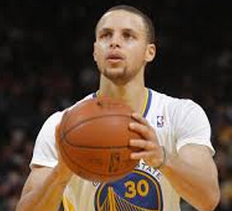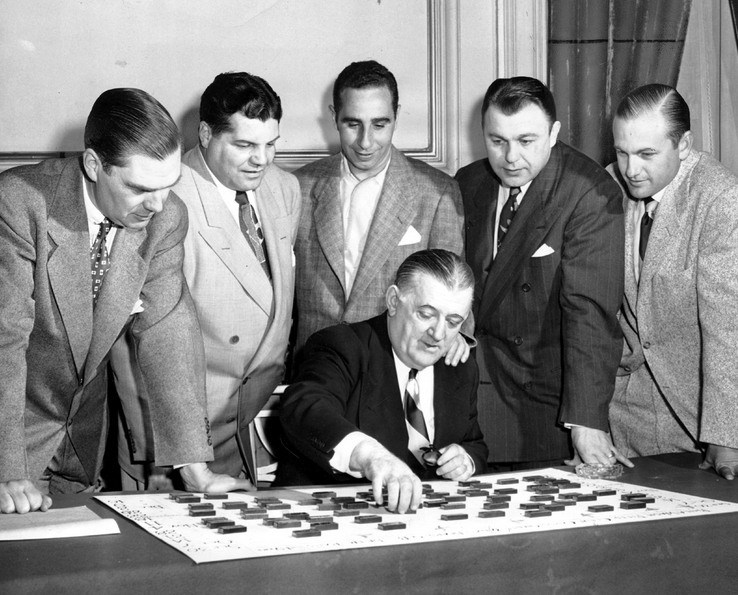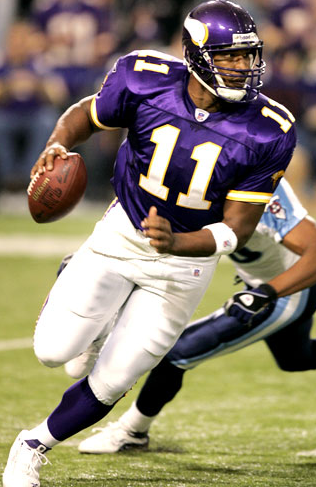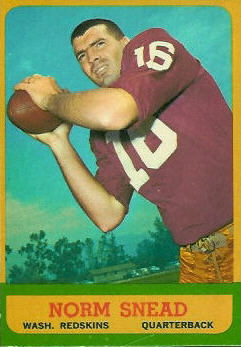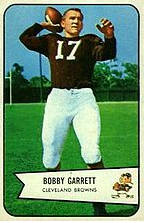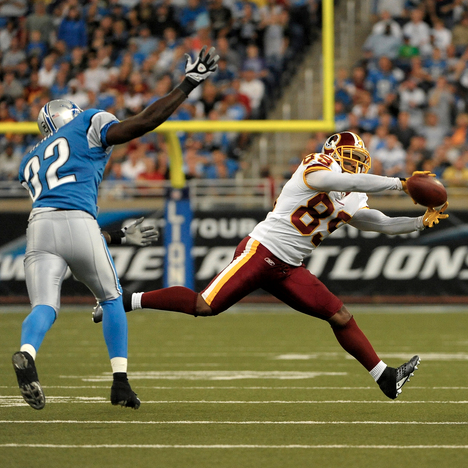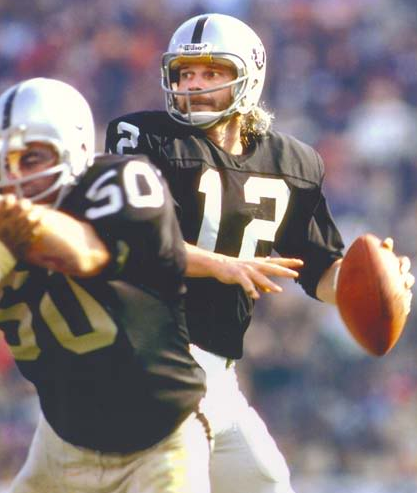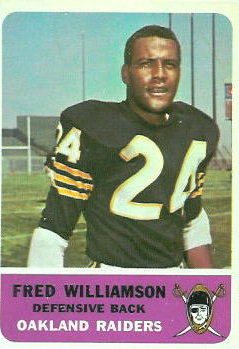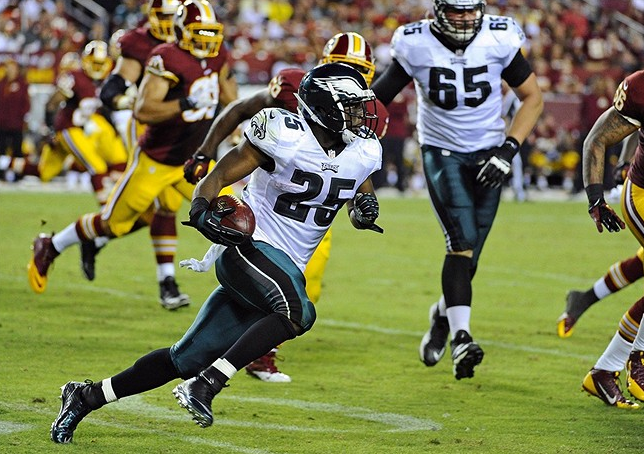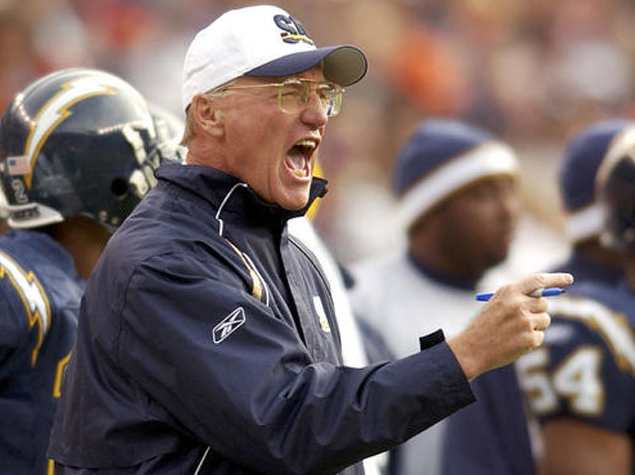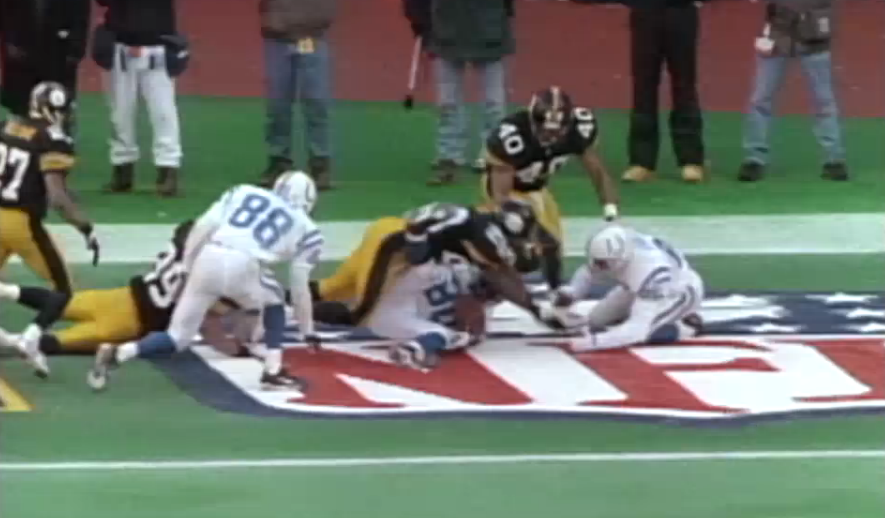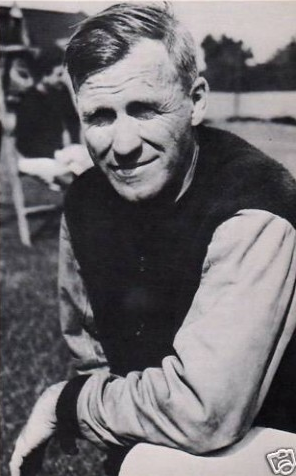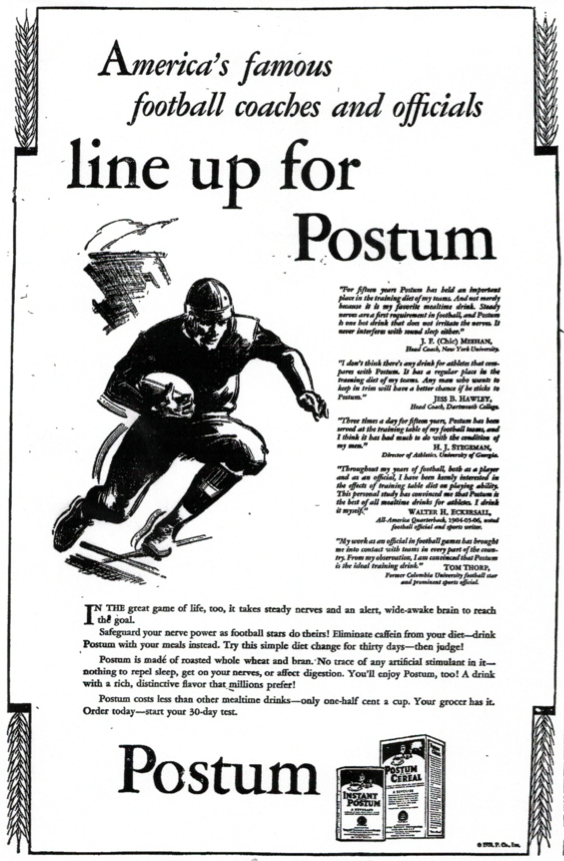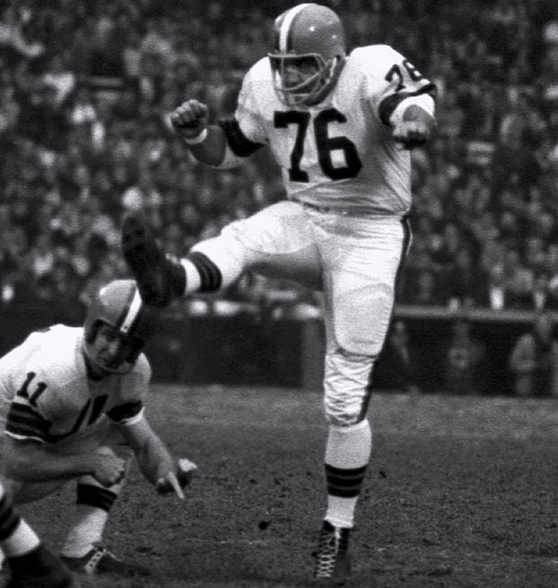We’re coming up on the 35th anniversary of one of the greatest seasons ever by an NFL player. Was it as great as Eric Dickerson’s 2,105 rushing yards in 1984, Peyton Manning’s 55 touchdown passes in 2013 or J.J. Watt’s both-sides-of-the-ball ridiculousness last year? Well, it’s hard to compare one position to another, but put it this way: Nobody has come close to doing what Raiders cornerback Lester Hayes did in 1980 — not in the modern era, at least. And given the gap that exists between Hayes and The Rest, it’s possible nobody ever will.
Lester’s performance that season was truly off the charts — so far off that his record might be resistant to rule changes, a longer schedule and anything else that tends to make the past disappear. In 20 games that season, including the playoffs, he intercepted 18 passes . . . and had another four picks wiped out by penalties. It almost doesn’t seem possible.
And this didn’t happen just any old year, I’ll remind you. It happened in a year the Raiders won the Super Bowl (to just about everyone’s surprise). For his efforts Hayes won The Associated Press’ Defensive Player of the Year award, an honor much more likely to go to a lineman or linebacker than a DB.
Let me lay out the numbers for you, then I’ll get into the season itself. Hayes had a league-leading 13 interceptions in the regular season — one off Night Train Lane’s mark — and another five in Oakland’s four playoff games. His total of 18 is five more than anyone else has had since 1960. Five. (Before that, the seasons and playoffs were so much shorter that nobody really had a chance to pick off 18 passes.)
Here’s Hayes’ closest competition:
MOST INTERCEPTIONS IN A SEASON SINCE 1960 (PLAYOFFS INCLUDED)
| Year | Player, Team | G | RS | PS | Total |
|---|---|---|---|---|---|
| 1980 | Lester Hayes, Raiders* | 20 | 13 | 5 | 18 |
| 1969 | Emmitt Thomas, Chiefs* (AFL) | 17 | 9 | 4 | 13 |
| 1981 | Everson Walls, Cowboys | 18 | 11 | 2 | 13 |
| 1963 | Fred Glick, Oilers (AFL) | 14 | 12 | DNA | 12 |
| 1964 | Paul Krause, Redskins | 14 | 12 | DNA | 12 |
| 1964 | Dainard Paulson, Jets (AFL) | 14 | 12 | DNA | 12 |
| 1974 | Emmitt Thomas, Chiefs | 14 | 12 | DNA | 12 |
| 1987 | Barry Wilburn, Redskins* | 15 | 9 | 3 | 12 |
| 1976 | Monte Jackson, Rams | 16 | 10 | 2 | 12 |
| 1975 | Mel Blount, Steelers* | 17 | 11 | 1 | 12 |
| 1979 | Mike Reinfeldt, Oilers | 19 | 12 | 0 | 12 |
| 2006 | Asante Samuel, Patriots | 19 | 10 | 2 | 12 |
| 2007 | Antonio Cromartie, Chargers | 19 | 10 | 2 | 12 |
*won title
Yes, Hayes played in more games than the other defensive backs, and yes, some of them — the DNA (Does Not Apply) guys — didn’t even make the playoffs. But them’s the breaks. Besides, his interceptions per game of 0.9 is the highest of the bunch. (Next: Glick, Krause, Paulson and Thomas ’74 at 0.86).
It’s worth noting, too, that the league-wide interception rate in 1980 was 4.6 percent. Last year it was 2.5 — and if the Competition Committee continues to favor the offense, it no doubt will decline even further. That’s just going to make it harder to pile up 18 picks in a season. (Another way to look at it: In 1980 there were 627 INTs in 13,705 pass attempts. In 2014 there were 450 in 17,879 — 177 fewer in 4,174 more attempts.)
Now that the cold, hard data has been dispensed with, why don’t we take Hayes’ historic season interception by interception? Lester was quite a character, even by the Raiders’ oddball standards — the kind of player Twitter was made for. (Or maybe not. There was no telling, after all, what might come out of his mouth.)
Hayes considered himself, for instance, more than just an all-pro corner. In his mind, he was “the only true Jedi in the National Football League” (which was only to be expected, I suppose, of a player who claimed to have seen The Empire Strikes Back 300 times).
To Lester, money was “deceased presidents,” as in: “If the president of Australia doubled my salary and I was not under contract to the Raiders, I’d be on the first flight across the International Dateline. . . . It’s [all about] the deceased presidents, baby. In 1995, when the cost of bread is $5 per loaf, how is one to procure his loaf of bread?”
At Texas A&M, where he’d played linebacker, they called him “Judge.” That, he explained, stemmed from “a statement I made before we played Texas. I said our defense was going to hold court on Earl Campbell. I sentenced him to 2 yards on 20 carries.” (Campbell finished with 20 on 18.)
In 1980 Hayes was judge, jury and executioner as far as NFL quarterbacks were concerned. If they threw a ball anywhere near him, it was likely to wind up in his stickum-coated mitts (in the days when the Crazy Glue-like stuff was legal). How his season went:
● Week 1 (beat Chiefs, 27-14): Intercepted a Steve Fuller pass, setting up a field goal that made it 24-7 in the fourth quarter.
● Week 2 (lost to Chargers in overtime, 30-24): Had one of the Raiders’ five INTs against Dan Fouts.
● Week 3 (beat Redskins, 24-21): In the fourth quarter, with Washington at the Oakland 21, he picked off Joe Theismann’s throw to halt a drive.
● Week 4 (lost to Bills, 24-7): Returned an interception 48 yards for a touchdown, the Raiders’ only score. Victim: Joe Ferguson.
● Week 8 (beat Seahawks, 33-14): Had two INTs, both off Jim Zorn. The first led to a TD, the second to a field goal.
● Week 9 (beat Dolphins, 16-10): From the AP account: “Lester Hayes had one interception, and would have had another — on which he rambled 95 yards for an apparent TD — had the play not been called back by an Oakland offside penalty.” QB: Uncertain (either David Woodley or Don Strock).
● Week 10 (beat Bengals, 28-17): A one-INT day could have been a three-INT day if two more picks hadn’t been nullified by offside penalties. The one he did get came on the final play of the first half when Jack Thompson threw up a Hail Mary.
● Week 11 (beat Seahawks, 19-17): With 4:20 left, he intercepted a Zorn pass and returned it 19 yards to the Oakland 39. The Raiders then drove to the Seattle 10, where Chris Bahr booted a game-winning 28-yard field goal.
● Week 12 (lost to Eagles in Super Bowl preview, 10-7): Picked off a Ron Jaworski pass at some point, but the newspaper stories don’t say when. (Unfortunately, the league’s gamebook archives only go back to 1981, which is why I have to rely on newspapers.)
● Week 13 (beat Broncos, 9-3): Another end-of-the-first-half-Hail-Mary job, this time at the expense of Craig Morton.
● Week 15 (beat Broncos, 24-21): Had a second-quarter INT. (Matt Robinson threw it.) It was followed by a field goal that put Oakland ahead to stay, 10-7.
● Week 16 (beat Giants, 33-17): The New York Times: “Late in the second quarter, with the Giants trailing by two touchdowns, [Scott] Brunner overthrew a pass to [running back Billy] Taylor. It was intercepted by Lester Hayes, his 13th steal of the season, and returned 50 yards” — helping to put another three points on the board.
● Playoff Game 1 (beat Oilers, 27-7): Thanks, once again, to the wonders of YouTube, I was able to find video of all five of Hayes’ postseason picks. This is the first — in the end zone in the third quarter, when Oakland had a tenuous 10-7 lead.
And this is the second, near the end, with Oilers quarterback Ken Stabler — Lester’s former Raiders teammate — facing a third-and-18 at the Houston 2:
Touchdown — Hayes’ second of the season. He also had two sacks that day. Just so you know: No defensive back has had a two-interception/two-sack game since the sack became an official statistic in 1982. Three linebackers have accomplished the feat, though – the Bengals’ James Francis (1992), the Dolphins’ Robert Jones (1998) and the Steelers’ Joey Porter (2002). That’s the kind of year it was for Lester.
● Playoff Game 2 (beat Browns, 14-12): Suckered Brian Sipe into two more INTs. Pick No. 1 came on a third-and-10 play from the Cleveland 48 midway through the first quarter:
Pick No. 2 was yet another a Hail Mary situation – just before halftime:
NBC analyst John Brodie made a classic comment during the replay: “A lot of fellas would be content to just bat it down. Not Lester. Put another skin on the wall.”
Exactly. Anything Hayes could get his hands on, he was going to catch. In that instance he was trying to keep the ball away from a 6-foot-4 former college basketball player (wideout Dave Logan), so who can blame him?
Amazingly — given all his interceptions — Lester didn’t have the most memorable INT in that game. The Raiders’ strong safety, Mike Davis, did, picking off a Brian Sipe pass in the end zone in the final minute to preserve the victory. The Browns were at the Oakland 13, in chip-shot field goal range, when Sipe tried to hit tight end Ozzie Newsome . . . and connected with Davis instead:
(The game was played in bitter cold, and Cleveland had already missed an extra point and two field goals. Coach Sam Rutigliano didn’t have a whole lot of confidence in kicker Don Cockroft at that stage.)
● Playoff Game 3 (beat Chargers, 34-27): Much of the talk before the AFC title game was about the matchup between Hayes and John Jefferson — all-pro corner vs. all-pro receiver. And sure enough, in the early going at the Oakland 14, Fouts wanted to go to Jefferson, who had lined up in the right slot. But JJ slipped, which resulted in Lester’s 18th and last interception of the season:
Hayes never had another year like 1980. Nobody has another year like that. In fact, he never had more than four interceptions in any of his final six seasons, though he continued to make Pro Bowls. Whether this had anything to do with the banning of stickum in ’81 is an open question. He used it, uh, liberally (as the photo at the bottom shows).
Still, he had some nice moments after that, including this one during the Raiders’ 1983 playoff run:
Before the Super Bowl against the Redskins, he said (in typical Lesterese): “As long as I procure those 72,000 deceased presidents on my birthday [Jan. 22 — the date of the game], that’s all I care about. It’s my destiny to spend my birthday intercepting three passes and scoring three touchdowns, a feat no other defensive back has ever done. I will do a 360-degree reverse slam dunk [over the crossbar] after each TD. It’s inevitable.”
Alas, he fell three interceptions, three touchdowns and three 360-degree reverse slam dunks short, but no matter. The Raiders won anyway, 38-9. Besides, he’ll always have 1980. And when I say “always,” I’m pretty sure I mean always. Who’s ever going to have more 18 interceptions in a season?


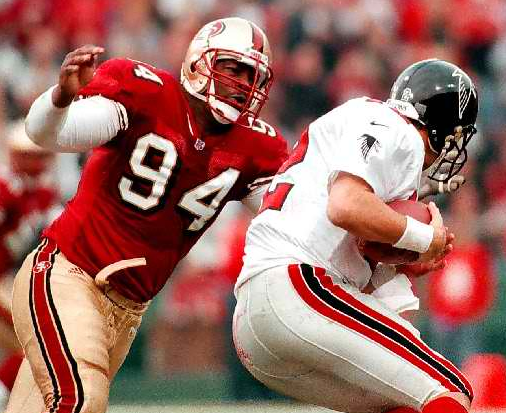
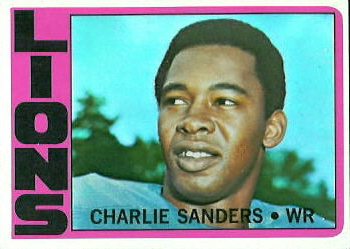
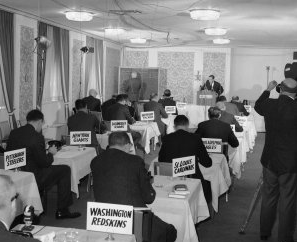
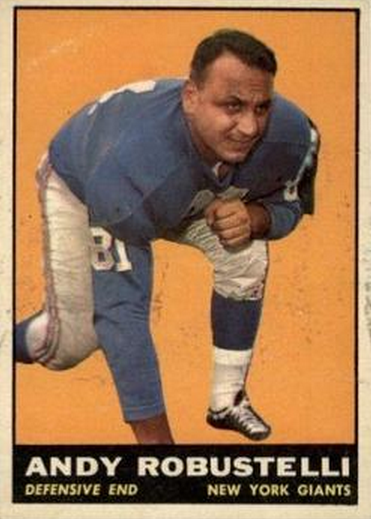
![Terry Baker: a better arm “for carrying around a trophy [than] throwing a football."](https://profootballdaly.com/wp-content/uploads/2015/04/Terry-Baker-with-Heisman.png)
